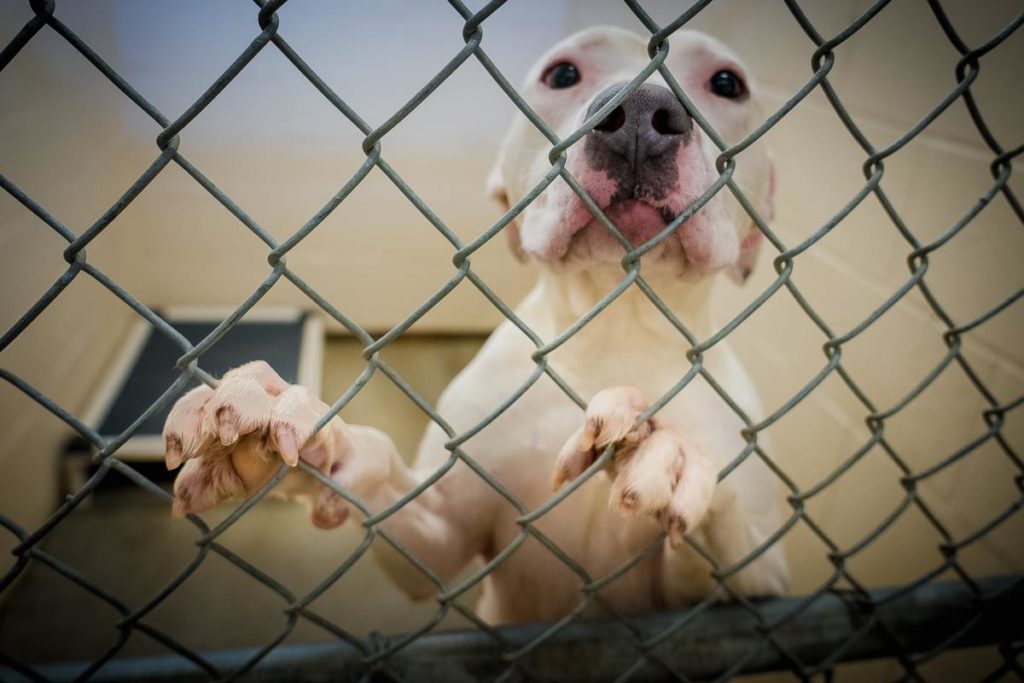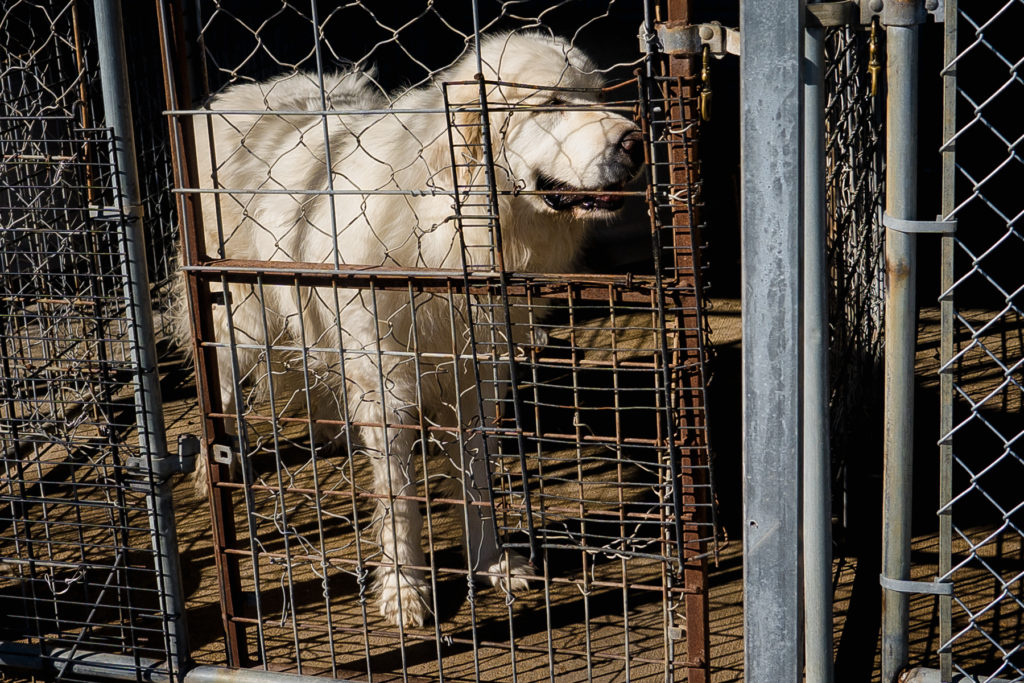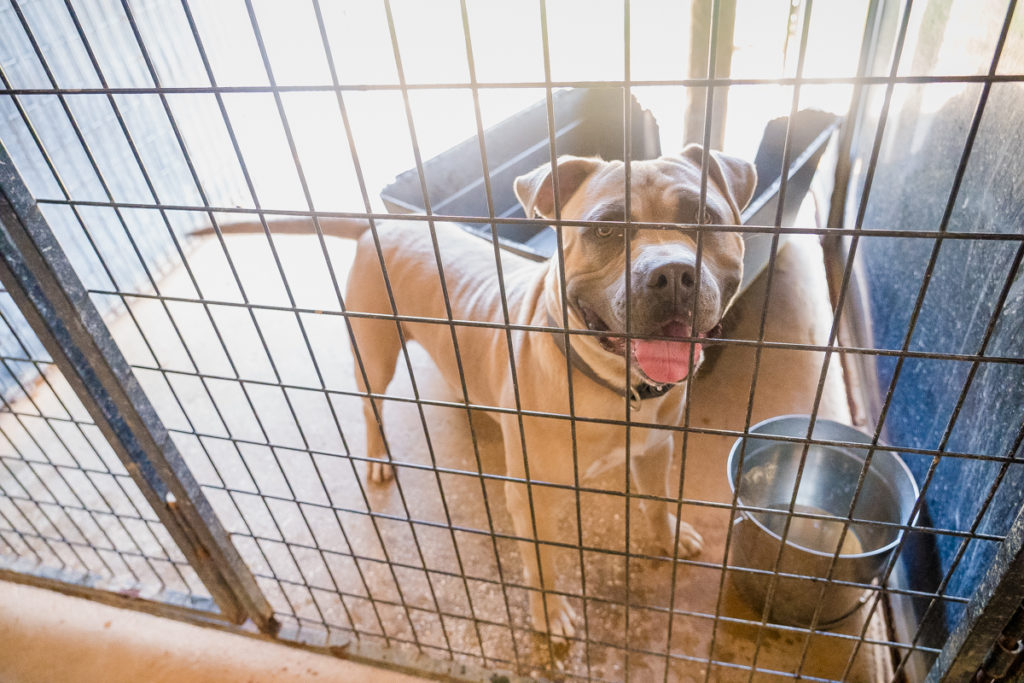“Eight thousand? I had no idea!” This was the response of another rescue advocate when I informed her that a shelter I had recently visited in her state continued to destroy over 8,000 animals each year.
If you aren’t aware of a problem, you can do nothing to fix it. In fact, you don’t even know you need to fix it.
In too many states in this country, dogs are dying and suffering unnecessarily. In North Carolina, you can look at the numbers for yourself. By law, the intake and outcome numbers are reported annually for every county and municipal shelter. This year’s report revealed that in Robeson County, 4,085 of the 5,275 animals the shelter took in were “euthanized.” That’s 77% of the animals destroyed, despite having a budget of $605,000. If I lived in Robeson County, I would be outraged (actually, I don’t live in Robeson County and I am still outraged), as those are tax dollars at work.

North Carolina is an easy target for national rescue organizations because they so blatantly share their numbers. Personally, though, I applaud North Carolina. I wish every state followed their lead, not just in publicly declaring their numbers but in having public shelters in nearly every county.
This is a country of dog-loving people. We spend billions on our dogs’ diets, medical care, and training. We buy them monthly subscription boxes for toys and treats, send them to doggie daycare, and even provide our beloved furry family members with their own wardrobes.
As I’ve traveled and visited almost fifty shelters and rescues in the southeastern United States, one truth has become very clear: the problem of so many animals being senselessly destroyed or suffering for months, even years, in ill-equipped shelters and dog pounds, does not exist because people don’t care. It exists because people don’t know.

At a shelter in South Carolina, on the clipboards hanging outside individual kennels are papers indicating where the dog came from, when they arrived, and other vital statistics. Some papers are covered with a large, hand-scrawled X. Those marks indicate which dogs will be killed when their kennel space is needed for an incoming dog. The X’s are put there by the Animal Control Officers for any number of reasons: breed, size, age, health, or aggression. The rescue I foster with, Operation Paws for Homes, has pulled two six-month old puppies from that death row following our visits there. Both puppies landed there because they were black and possibly had some “pit bull” in their heritage. Both were easily adopted and have turned out to be wonderful family pets.
Photos of those X’s brought enormous reaction and public outcry, but I have since had time to think about the X’s. If not for them, both of those puppies would have died at that shelter. I would have seen those sweet puppies and walked past their kennels, certain that they would be adopted or pulled by a rescue. I wouldn’t have been motivated to stop, take pictures, ask for more information, and then advocate for them to be rescued.
Knowledge is power. There are invisible X’s on kennels in nearly every high-volume shelter or rural dog pound in the south (and other urban and rural parts of this country). No one wants adoptable dogs to die, but until we are aware of the situation, we can never hope to change it.
I write a lot about shelter dogs and many people will confess to me, “I couldn’t read your post/article/book because I couldn’t handle it, it would make me too sad.” Maybe this is why shelters, governments and even rescues hide the truth. We don’t want to offend anyone or make them sad. But if we don’t own up to what is happening, how will it ever change?

How will people ever know about the municipal dog pound in Tennessee that houses about thirty dogs at a time, hidden in a back lot of the county fairgrounds? The dogs that land in those outdoor kennels suffer in 100+ degree heat, vicious thunderstorms, even snow, and then they die in succession as their time is up. They are not vaccinated, treated for fleas or worms, spayed or neutered, or given any kind of medical treatment. It’s $50 to adopt one, but adopters are few and far between and most rescues don’t even know the pound exists. The dogs don’t get any exercise; their kennels are sprayed out with them inside because the current Animal Control Officer says, “I’m too old to chase after them.” On the day we visited, we met a beautiful, purebred great Pyrenees, two chocolate labs, and a litter of boxer puppies, plus countless hound dogs and mixed breeds.
In Hyati, the county in the boot heel of Missouri, there is no Animal Control Officer or shelter, just four kennels behind the county maintenance shed. Hundreds of stray dogs run loose. The few that are caught are held for the five days required by law before being sent to a local vet just over the state line to be killed. I found stories like this everywhere.
In Jackson, Mississippi, there is a privately funded shelter, with a budget of over one million dollars, killing more than eight thousand animals a year. Pit bulls, heartworm positive dogs, pregnant dogs, dogs with any kind of medical need, even ringworm, are killed on intake. Their director told me this, unflinchingly, as she blamed an ignorant public and the fact that theirs is the only open-intake shelter in a 100-mile radius. She bragged, “People come from bordering states, because they know we will take any dog.”

I also found stories of incredible individuals working privately and sacrificing time, energy, and their very livelihoods to save animals. One pair of sisters, now in their sixties, houses 75 dogs and 145 cats on their small farm, giving them better care than they would get in any dog pound, but the animals linger there for years. In Alabama, a remarkable woman who many consider a Great Dane expert rehabilitates and rehomes Great Danes and other dogs on her small, shady property, rotating the dogs between the outdoor kennels and her home so that they have a chance to learn to live indoors before she places them in adoptive homes.
At some public shelters, I met directors with tiny budgets and few resources who are managing to save every adoptable dog through rescue and innovative marketing programs. I met directors handling huge numbers of animals, who are finding a way to save every animal they can, mainly through out of state rescues.
I met advocates frustrated by the enormity of the problem and the inaction and apathy of local governments, doing all they could and feeling defeated.
What I really saw though, were individuals with buckets trying to empty a beach full of sand as the ocean continued to wash more up every day.

Awareness is the first step toward change. It is past time for our country to acknowledge what is happening in the public shelters and municipal pounds of our southern states. We can fix this. I have seen it happen even in impoverished communities, despite resistant local government. All it takes is one simple decision. This was voiced beautifully by a shelter director in Anderson County, South Carolina, whose leadership in just six months took their high-intake, high-kill shelter to a shelter that saves every last savable animal. When I asked how she did it, she told me, “You just stop killing animals.”
The problem of unwanted animals suffering and dying is many-pronged, but the solutions are not difficult. We have the resources and the dog-loving people in this country. What we need is to see the problem clearly, and to make the decision to fix it. The problem has never been that people don’t care; the problem is that they don’t know. It’s time to tell them. It’s time to stop killing animals.
Featured image: a boxer at Mississippi Animal Rescue League. Image credit Nancy Slattery.





